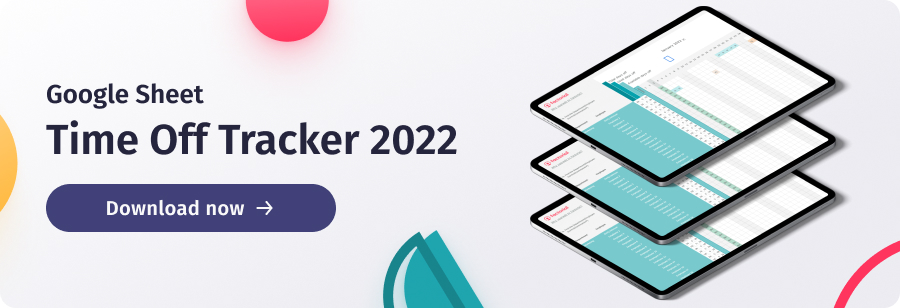Does your company track employee holidays? Have you ever considered implementing a policy for unlimited holidays?
In this article, we will take a look at unlimited holidays for employees, and share the biggest pros and cons of joining the trend. Could this new idea really be introduced into every organisation? What is the best way to manage employee time off work? Can HR software help?
What is an Unlimited Holiday?
Unlimited holiday allowance, also known as unlimited paid time off (PTO), flexible time off, or unlimited annual leave, is a policy where employees are not allocated a specific number of holiday days within a given year. Instead, they have the flexibility to take as much time off as needed – provided they meet their job responsibilities and objectives. This approach trusts employees to manage their work schedules effectively and balance their personal and professional lives.
How Does Unlimited Holiday Work in the UK?
As an employer, you must always consider a few things when managing employee time off and calculating holiday entitlement.
According to UK holiday entitlement law, full-time employees are entitled to a minimum of 28 days of holiday each year (known as statutory leave entitlement or annual leave). This includes agency workers, workers with irregular hours, and workers on zero-hour contracts. Employers can choose to include UK bank holidays in this total.
After these legal requirements are met, you can decide what to do next. You might decide, for example, to implement an unlimited holiday policy. If a company offers its employees unlimited holidays, it means it trusts them to manage their own holidays and take as much time off as they feel they need.
Provided employees meet all deadlines, they can choose when to take a day off and when to work. In other words, they are evaluated on their output, not their physical presence.
The trend began in the US in the 1990s and is now being adopted by many British companies. By offering the incentive, the hope is that employees will take ownership of their work and enjoy a better work-life balance.
Case Studies of Staff Unlimited Holidays
Many companies have documented and reported on their switch to an unlimited holiday policy.
The Netflix unlimited holiday policy was among the first ones to offer its employees unlimited time off in 2010. In fact, they were one of the very first pioneers to introduce this controversial policy. It took Netflix a while to get the policy right, though. Their most notable issue was an accounting fiasco when the finance manager decided to take the busiest week of the year off!
They were quickly followed by Github, which also offered flexible hours and unlimited sick time. Github found that employees were happier and more engaged, and they noticed that profits quickly went up. The company has a rating of 4/5 on Glassdoor and scores very highly for compensation, benefits, and work-life balance.
Evernote took it further and offered its employees a yearly stipend for their holidays. They believe this helps to create an environment where all employees feel valued and empowered.
Another famous example is Roku. The TV streaming giant encourages employees to take as much time off work as they feel appropriate. Their only request in return? Hit all deadlines and ensure it doesn’t affect their colleagues or production levels.
Richard Branson follows this same sentiment at his company Virgin Management. He famously claimed, “Just as we don’t have a nine to-five policy, we don’t need a vacation policy”.
Also, in 2018, UPD, a Dutch consulting company, implemented an unlimited holiday policy to enhance work-life balance and attract top talent. The organisation aimed to give employees more time for personal and professional development, fostering equality and a trusting culture.
The policy allows employees to independently determine their ideal work-life balance, with a minimum of 20 days off annually. The change required a paradigm shift and coaching sessions to align the leadership team and address concerns about potential abuse. The successful implementation increased employee satisfaction, providing them the flexibility to take the time off they need.
Another successful company, Kronos, introduced an unlimited holiday programme in the US and Canada in 2016, aiming to enhance its workplace culture, attract and retain talent, and deliver better results. The programme required significant education for managers and employees on negotiating time off.
Despite initial concerns about potential abuse, the average usage increased by only 2.65 days per year. Trust in employees and a focus on results over face time were critical drivers for the programme’s success, impacting engagement positively and leading to a drop in voluntary turnover from 6.4% to 5.6%.
The Benefits of Unlimited Holidays
The success of an unlimited leave policy depends on effective communication, a culture of trust, and clear guidelines to ensure that both employees and employers benefit from the flexibility it offers. If all of that is present, implementing an unlimited leave policy will likely offer various advantages for employees and employers. Here are some of the pros of unlimited leave:
- An unlimited holiday policy can empower your workforce.
- Having an unlimited holiday policy can increase employee satisfaction.
- The policy for unlimited holidays is much more flexible, enabling employees to create a healthier work-life balance.
- An open policy for managing employee holidays can also help companies stand out in the job market and attract higher-quality talent.
- Unlimited holidays can help employees create a sense of ownership and responsibility for the work they do, thus increasing productivity.
- Employers can focus on measuring output instead of hours physically spent at the office.
- Flexible benefits such as unlimited employee holidays can boost employee morale and improve workplace culture.
- Companies learn to trust their employees to act like stakeholders and be responsible for managing their own time and workloads.

The Disadvantages of Unlimited Holidays
While potential drawbacks exist when offering unlimited holiday, they are not universal, and many organisations have successfully implemented unlimited leave policies by implementing safeguards and actionable steps that either mitigate or prevent such pitfalls so that you can ultimately safeguard employee health. Here are some cons to look out for:
- Not having a set holiday allowance can lead to increased work anxiety. This is because employees are not aware of the acceptable holiday limit and they are afraid of being judged unfavourably.
- Managers and high performers may not feel like they can take time off work.
- An unlimited holiday policy might lead to unfairness. Some employees may be fine with taking 30 days off, others might worry about being away for too long and burdening their colleagues.
- It can lead to problems with productivity. If little or no notice of a holiday is given, then it can lead to staffing issues.
- Unlimited holidays wouldn’t work for companies where employees are required to be on-site, such as manufacturing, production or service industries.
- If a company allows unlimited holidays, then they probably aren’t tracking attendance data and performance. This could lead to red flags going unnoticed for any potential problem areas within the company.
- It can be difficult to implement and even harder to manage. It also makes it difficult to ensure all legal requirements are met in terms of statutory leave entitlement.
Creating an Unlimited Leave Policy
Here are a few tips for offering unlimited holidays and building your own policy:
- Leave Stipend System: Execute a leave stipend system where employees receive a specific budget of paid leave days annually, which can be negotiated based on individual needs.
- Rotational Leave Mandate: Institute a rotational leave mandate for all employees, ensuring each team member can send holiday requests and take at least two weeks off consecutively at least once a year.
- Leave Utilisation Metrics: This system tracks not just the number of days taken but also the purpose of each leave, helping you identify trends, understand employee needs, and create a strategic leave architecture.
- Collaborative Leave Planning Sessions: Introduce mandatory collaborative leave planning sessions between employees and their managers at the start of each quarter, where you can set expectations, align leave plans with project timelines, and establish contingency measures.
- Creating Feedback Loops: Make room for a real-time feedback mechanism so employees can express concerns or suggestions regarding the unlimited leave policy. This means regular pulse surveys, open forums, or dedicated communication channels.
- Leave Impact Simulation Training: Provide specialised training for managers through leave impact simulation sessions. You can use scenarios and simulations to equip managers with the skills to manage workloads effectively during team members’ absences, minimising disruptions.
Managing Employees' Unlimited Holidays
Ultimately, the scheme will only work if you have a company built on a culture of trust and shared responsibility. Your employees need to trust you, and you need to trust your employees. It also wouldn’t work for all business types. It might be an option for tech companies, but it wouldn’t work for any job involving shift work, dealing with the public or manufacturing and production.
Boundaries and rules can also be blurry. Does notice still need to be given? How will it impact other team members? Is there a limit to how many paid holidays they will get? Are holidays truly “unlimited”? What frequency would be deemed unacceptable? Will you still be managing, tracking and analysing employee holidays?
Whether or not you choose to offer unlimited holidays, you still need to manage the time that your employees spend away from the workplace. You must define a policy with clear guidelines. You need to record your data to measure performance. And you need to make sure all employees are getting the time off they are entitled to by law.
If you don’t already have a holiday tracker or use an effective Excel template, then you might want to check out these 7 tips for managing employee holidays.
And if Excel is not your thing, you might consider trying our time-off software to streamline your processes. The solution lets your workers manage their own holidays and absences, but as an employer, you still retain visibility and access to data.



